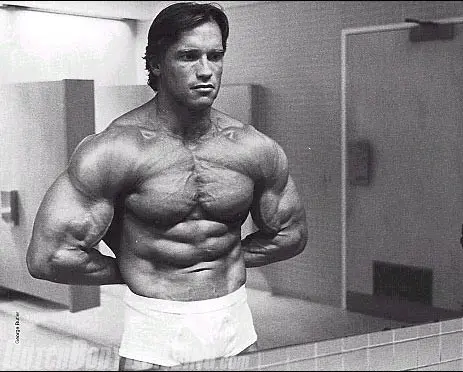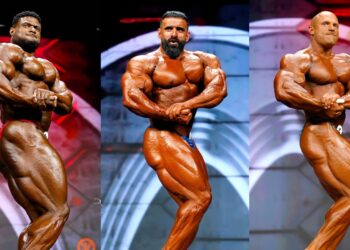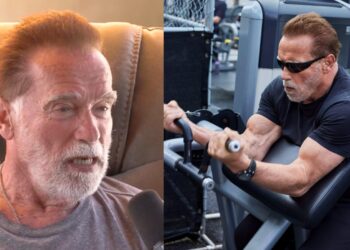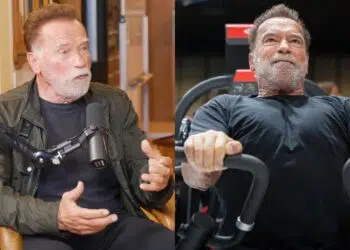Stretching the tape at an incredible 58″, Arnold Schwarzenegger’s chest had it all: size, shape, balance and definition. When he hit a side chest pose, his pecs arched so high that a glass of water could rest atop them.
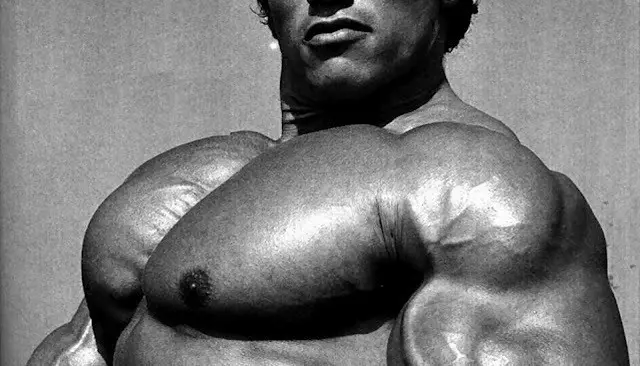
With highly refined training techniques and dietary principles, IFBB pros can now, develop physiques that, 30 years ago, would have been unfathomable to most bodybuilders.
In large part, the majesty of Arnold’s chest along with, that of his vaunted arms, propelled him to seven Mr. Olympia titles (1970-75 and 1980). Yet, as familiar as we may be with the voluminous photographic documentation of his mighty torso, one question remains as pertinent now as it, was during his competitive heyday: How did he build it; what was the exact workout Arnold Schwarzenegger used to develop what is arguably the best chest of all time?
The Evolution
To better appreciate Arnold’s ultimate chest-blasting routine, the one he devised in response to the greatest challenge of his bodybuilding life, it is helpful to take a brief look at his bodybuilding roots and the routine he first employed to build the raw mass from which he would later sculpt his masterpiece. From the beginning, Arnold valued the importance of a massive sculpted chest. It is not insignificant to note that his primary source of inspiration at the time was pictures of Reg Park he had clipped from the pages of MUSCLE BUILDER magazine (the forebear to MUSCLE & FITNESS). Winner of three Mr. Universe titles over a span of 14 years (1951; ’58 and ’65), Park was the prototype for the giants we see onstage today.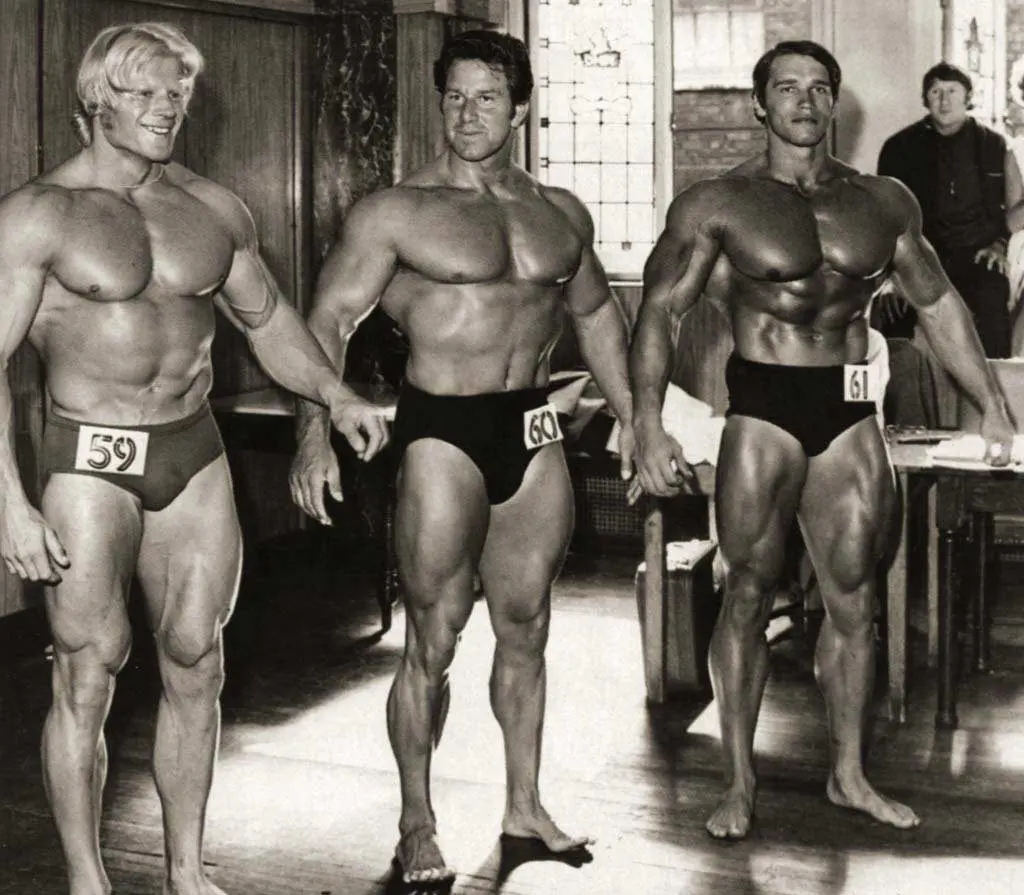
He had both a huge rib cage and enormous pectorals, and every time I saw his famous side chest shot, I knew that I wanted to soon be as good in the same pose,” recalls Arnold. Park stood 6’2″ and weighed 230 pounds. His unprecedented size; particularly that of his tree-trunk thick upper torso, gave young Arnold a lofty goal to shoot for.
Level Up Your Fitness: Join our 💪 strong community in Fitness Volt Newsletter. Get daily inspiration, expert-backed workouts, nutrition tips, the latest in strength sports, and the support you need to reach your goals. Subscribe for free!
Ever the diligent student, Arnold analyzed his idol’s chest development the way a, geneticist might examine a string of nucleotides and determined that there were three distinct features that, when viewed as a whole, accounted for Park’s pectoral prosperity.
First, the muscles themselves were just plain large: thick, wide and high.
Second, his pectoralis major (the lower portion) and pectoralis minor (the upper portion) groups were balanced with one another in a way that gave his chest a proportionate squared-off look rather than the rounded sagging appearance typical of those who focused too heavily on flat benches and not enough on inclines. Finally, supporting Park’s pecs was a voluminous rib cage, the biggest in the sport at the time.
With the Park template clearly etched in his mind’s eye, Arnold developed a basic routine that enabled him to pack on as much quality mass as possible without too much concern for detail.
Arnold worked hard and he worked heavy, hitting his chest three days a week and would often work his back on the same day, relishing the feel of a fully pumped upper body at the end of the workout. (Schwarzenegger employed a six-days-on/one-day-off double-split routine throughout much of his professional career.)
The results of this no-nonsense routine were quick and dramatic. After five years on this regimen, Arnold’s chest swelled from a sunken 39” to a whopping 58” a 19″ gain!
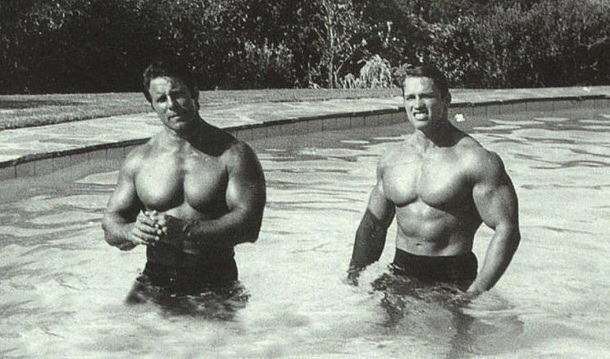
By the early 1970s, Arnold had developed the largest muscular chest the world had ever seen, but he knew from firsthand experience that bigger wasn’t always better. It was in 1968 that huge but relatively smooth Arnold had lost the Mr. Universe title to polished and defined Frank Zane, some 60 pounds lighter.
That defeat was an early lesson that the quality of one’s muscle development is as important as the quantity when it comes to competitive bodybuilding.
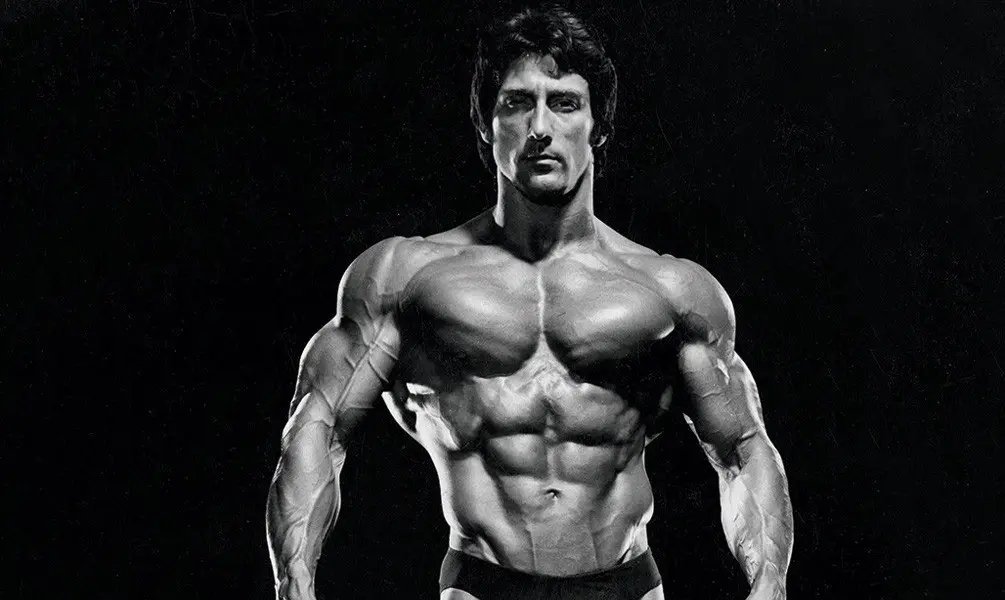
The Revolution
When Joe Weider recited to two-time defending Mr. Olympia Arnold Schwarzenegger the names of the athletes scheduled to challenge him in the 1972 competition, it sounded like a roll call for a bodybuilding hall of fame: Sergio Oliva, Franco Columbu, Frank Zane and Serge Nubret. Arnold knew it would be by far his toughest challenge to date and realized that he would have to take his physique to a new level to remain the king of the hill.
“After talking things over with Joe,” Arnold recounts, “I decided that what I needed was a workout program that would allow me to work each muscle group to the limit to force growth and definition to improve simultaneously.”
